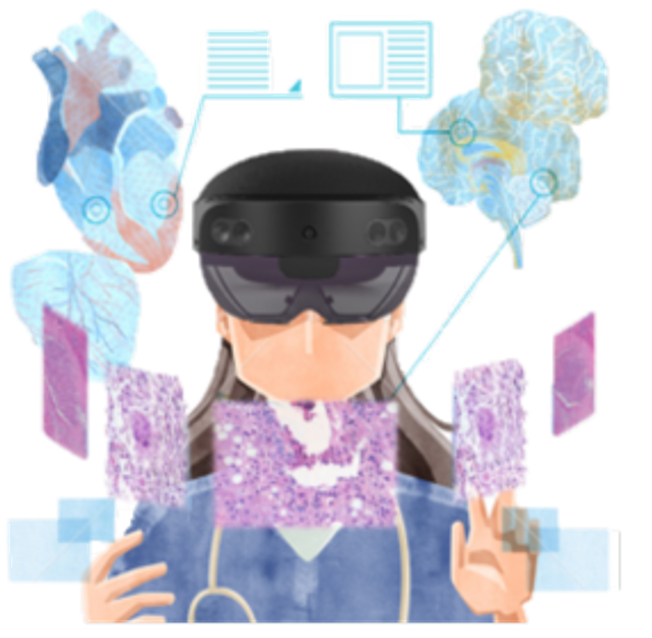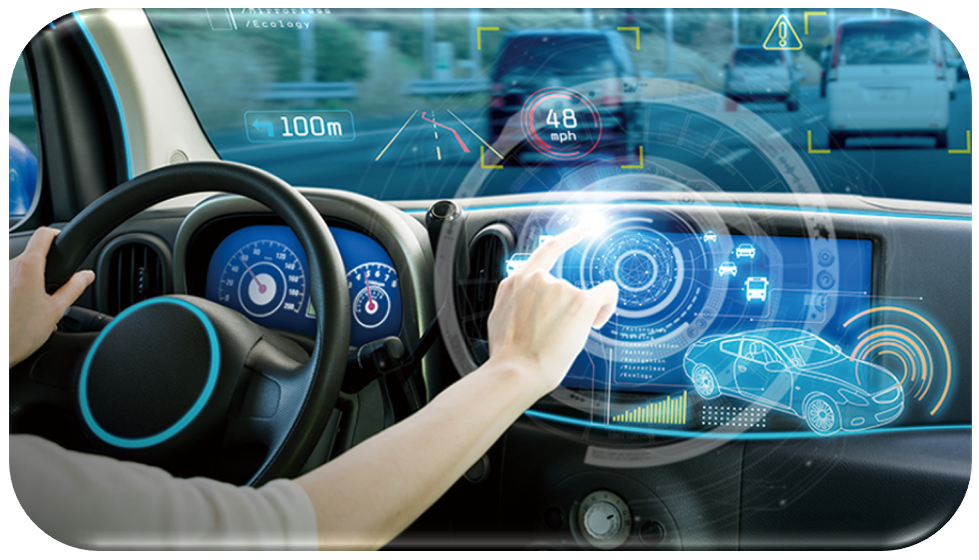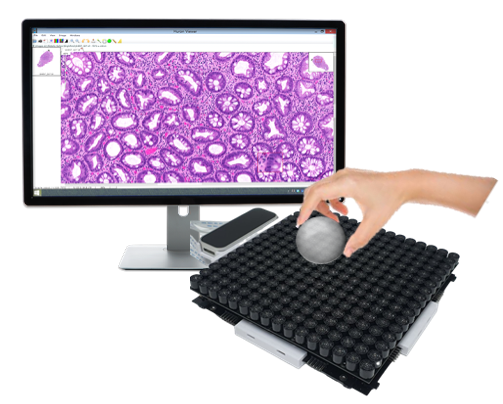Development of Interaction Technology in Prospective Smart Display
To increase the added value and application fields of the display industry, our laboratory developed two advanced interaction technologies for medical and automotive applications. The integration of haptic feedback and AI gesture recognition technology into Micro LED displays, Mixed Reality (MR) glasses, and floating projection automotive interfaces have become an essential indicator of interaction technology for forward-looking display applications.
Our laboratory won a 30.4 million NT dollars subsidy for two years from the Ministry of Science and Technology's “Prospective Smart Display Project” and developed the ultrasonic haptic feedback technology and MR interactive technology applied to the digital pathological platform. The system interface provides high-zoom images and a variety of operations for users. The virtual image displayed of MR will be superimposed on the virtual objects with haptic feedback in the space so that doctors can intuitively operate the digital pathology platform through the interface with haptic feedback and visualized virtual objects. It can experience the feeling of real touching and clicking on objects through ultrasonic haptic feedback and give interactive feedback promptly during the operation process so as to reduce the cognitive error of the doctor's operation and avoid the occurrence of misinterpretation and other situations. To enhance the image quality of the medical-grade display, we plan to fabricate a Micro LED display panel with functions of self-luminance detected and gray level luminance compensation. By the circuit design of the inner pixel, a pathology display with high uniformity, high contrast ratio, and high reliability can be accomplished. Hence, the doctors can acquire high-quality images, favoring the observation of pathology slices to diagnose correctly without the interference of the image mura. Finally, we will integrate the ultra-sonic tactile feedback and the MR interactive systems with the medical-grade display. Through the feedback received from the doctors after using the system, the color adjustment of the display and the parameter calibration of the system will be conducted to optimize the operation sensitivity and tactile reality. Therefore, the users’ experience is improved, and the operation of the system can be verified to meet the requirement of the doctors from modern medical institutions.
For the application of automotive displays, our laboratory developed a non-contact ultrasonic haptic feedback system with floating projection to enhance the safety and interactivity of in-car electronic systems. This system integrates floating projection, ultrasonic haptic feedback, gesture recognition, and driving information to create an in-car interactive interface with 3D object haptic feedback. Drivers can interact with virtual components within the floating interface using gestures and simultaneously experience detailed tactile feedback generated by the ultrasonic haptic feedback device. The accurate control of the in-car system without the need to look at the display improves the driving experience and safety.

Figure 1. Interaction Technology in Prospective Smart Display.


